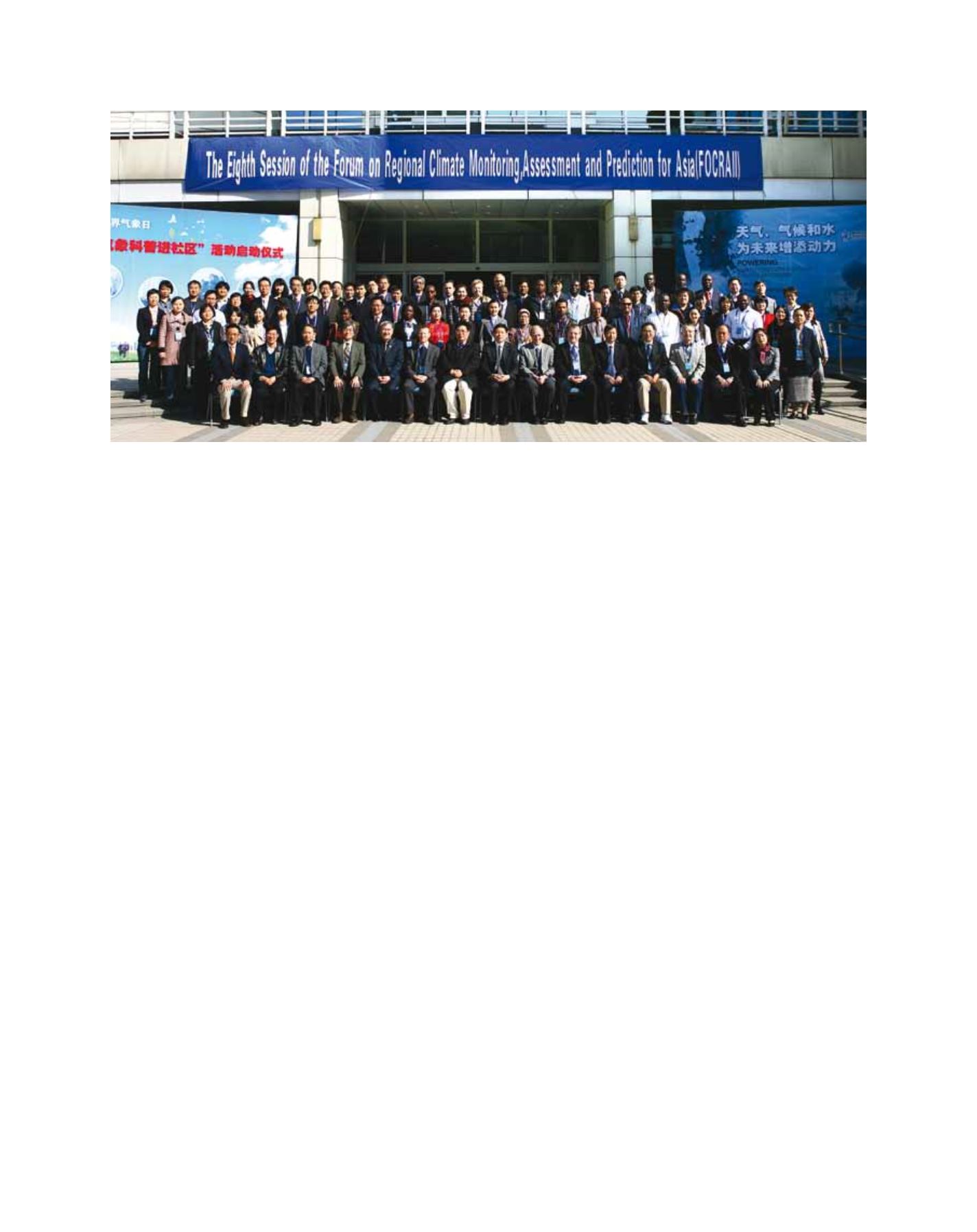

ing and exchanges on seasonal prediction experiences,
enabling them to benefit from an enhanced network of
climate experts and the production of consensus-based
predictions for the region.
Follow-up plan
Future objectives are to provide high-quality, accurate
predictions and improved information services for the
Government, to offer the general public the information
they are interested in, and to deliver special and refined
predictions and relevant information for various sectors
(agricultural production, major projects, environmental
construction and energy reserves etc).
In the context of global warming, the factors affect-
ing China’s flood-prone season and its correlations with
climate in the region have changed. This is not fully
understood, leading to unsatisfactory predictions and
services for the flood-prone season in some years. The
National Climate Center is required to better understand
and reconsider some climate behaviours from a perspec-
tive that can incorporate these changes, and apply them
in predictions and services for the flood-prone season.
Currently, our climate prediction in flood season
cannot meet the demand of the rapidly growing economy.
Particularly, predictions for seasonal turning-point
events and critical weather processes still leave much to
be desired; we lack effective means for extreme event
prediction, and the regional and basin-wide predictions
are not detailed enough. All these inadequacies prevent
us from providing refined and tailored services. As a
regional prediction centre of RAII, BCC will extend its
prediction services to other parts of Asia. However, it still
faces huge challenges in the availability of actual climate
data and effective means for making regional climate
prediction, which in return hinders BCC in further devel-
oping an integrated regional prediction system for Asia
that combines dynamics with statistics.
With the advent of dynamic models, flood-prone season predictions
not only focus on climate trend in China, but can also be used to
make climate predictions for Asia and even for the world.
Participating institutions
The consultation is organized through government involve-
ment and inter-institution synergy. The participating institutions
mainly include: BCC; the National Meteorological Center; the
National Satellite Meteorological Center; the Chinese Academy
of Meteorological Sciences; provincial operational climate serv-
ices; CAS; the Water Information Center of the Ministry of Water
Resources; hydrological centres for various river basins under the
Ministry of Water Resources; the National Marine Environmental
Forecasting Center; the Shanghai Typhoon Institute of CMA;
Peking University; Nanjing University of Information Science and
Technology and so on. These institutions individually put forward
their own predictions including:
• Precipitation and temperature trends in the flood-prone season
• Onset of the South China Sea monsoon
• Occurrence and duration of Meiyu period
• Intensity of rainy season in the North China region.
Different institutions consider various impact factors using diverse
methods. They provide a wide range of information from broader
perspectives to facilitate their understanding of previous abnormal-
ity and predictions for flood-prone seasons during the consultation.
FOCRAII
In order to provide high-quality climate applications and serv-
ices, under the auspices of the World Meteorological Organization
(WMO), BCC has hosted the annual Forum on Regional Climate
Monitoring, Assessment and Prediction for Asia (FOCRAII) on
regular basis since 2005. The forum mainly focuses on such topics
as seasonal and inter-annual climate predictions, Asian monsoon
activities, climate monitoring and impact assessment, climate system
modelling and regional climate cooperation. It provides a platform
for WMO members, particularly those in RA II, for mutual learn-
[
] 267
C
apacity
D
evelopment
Image: BCC
The Eighth Forum on Regional Climate Monitoring, Assessment and Prediction for Asia (FOCRAII)
















